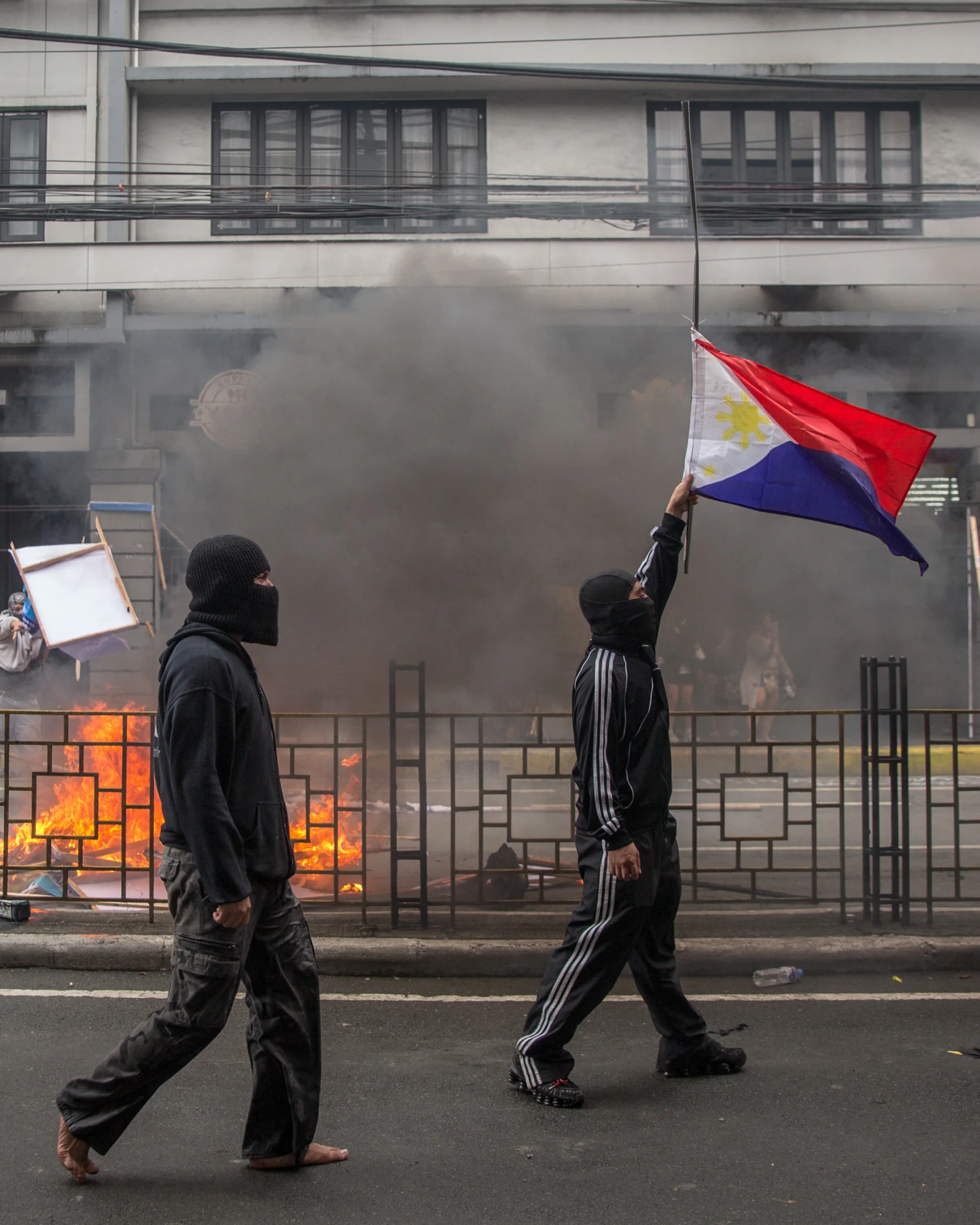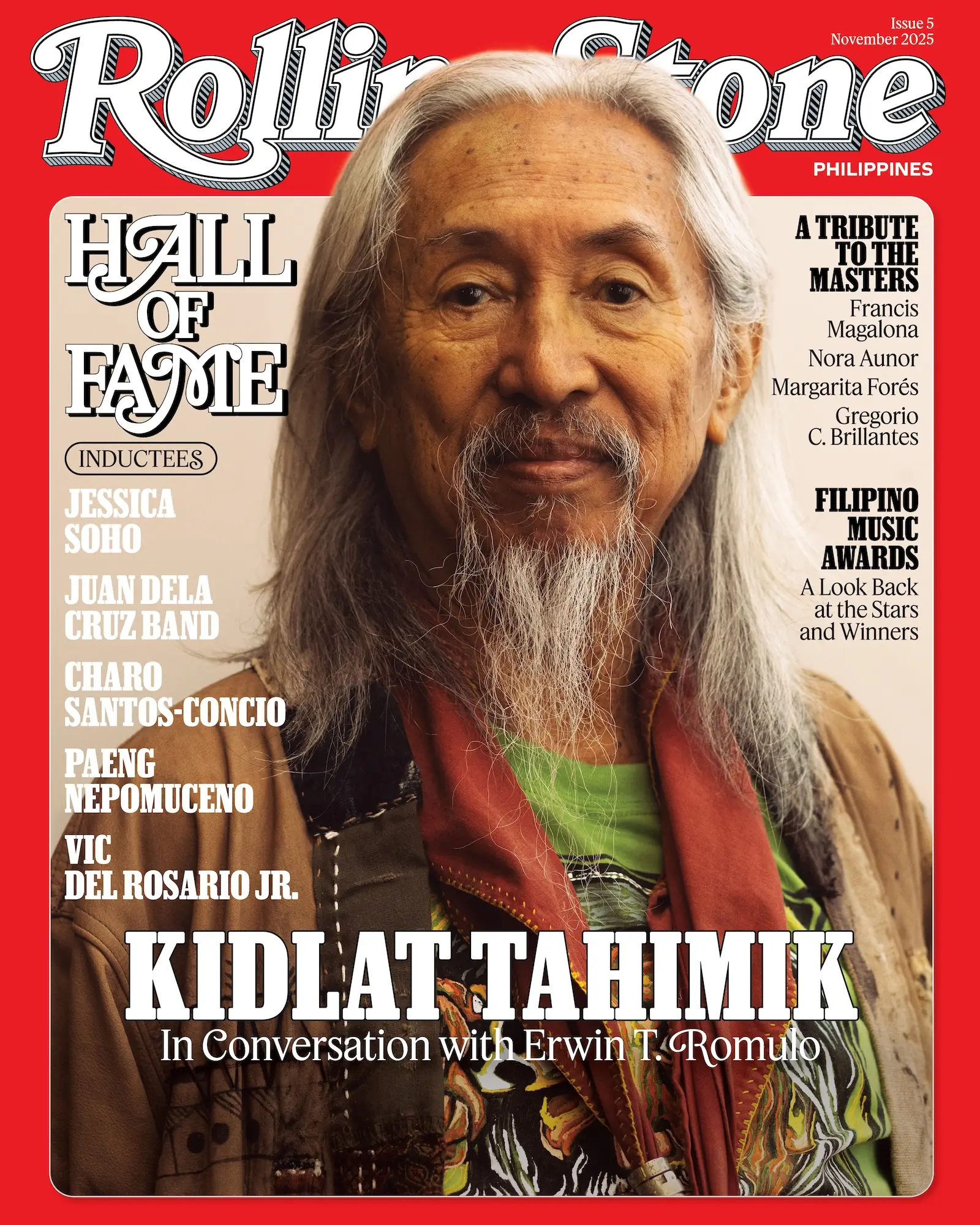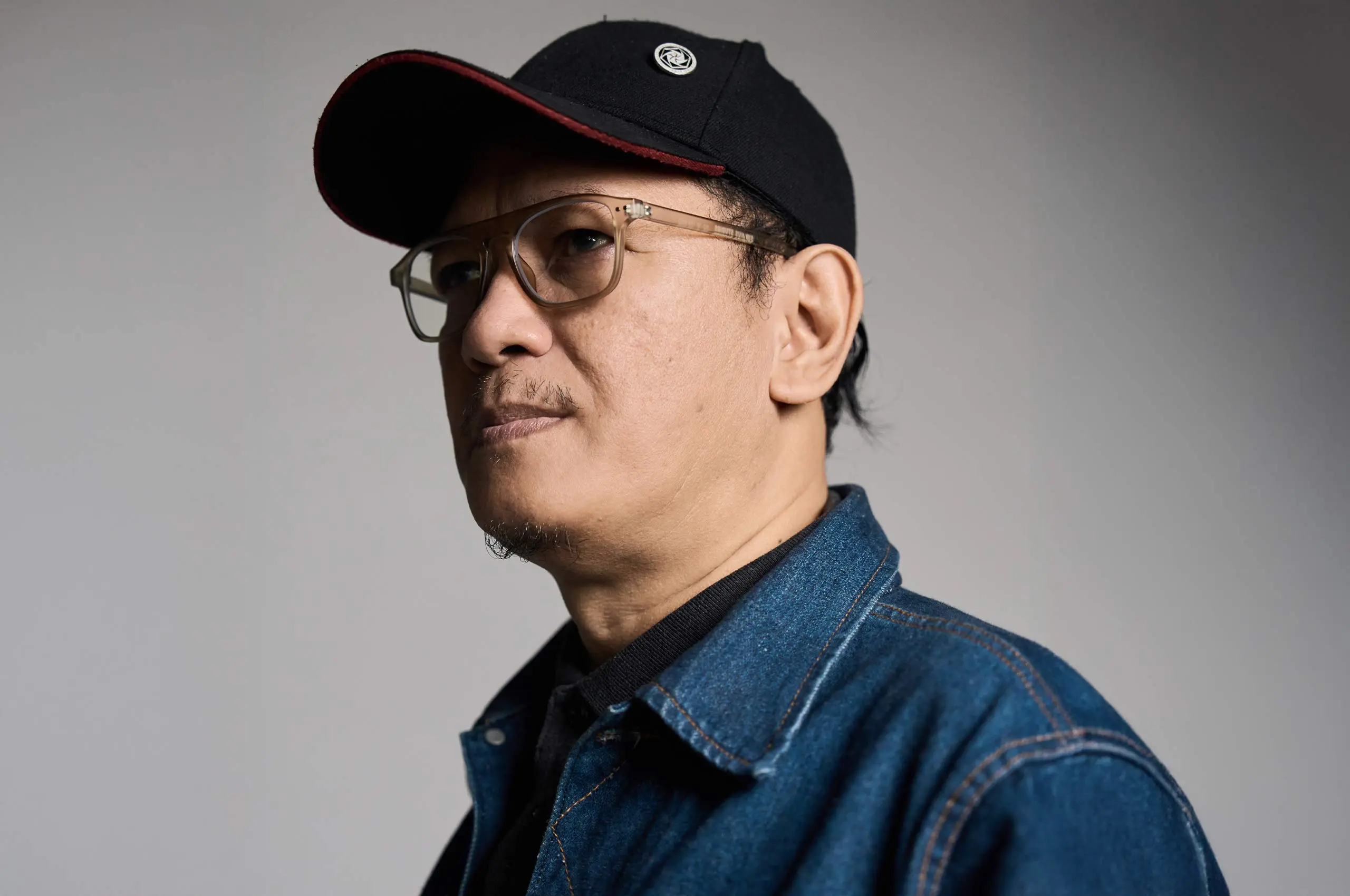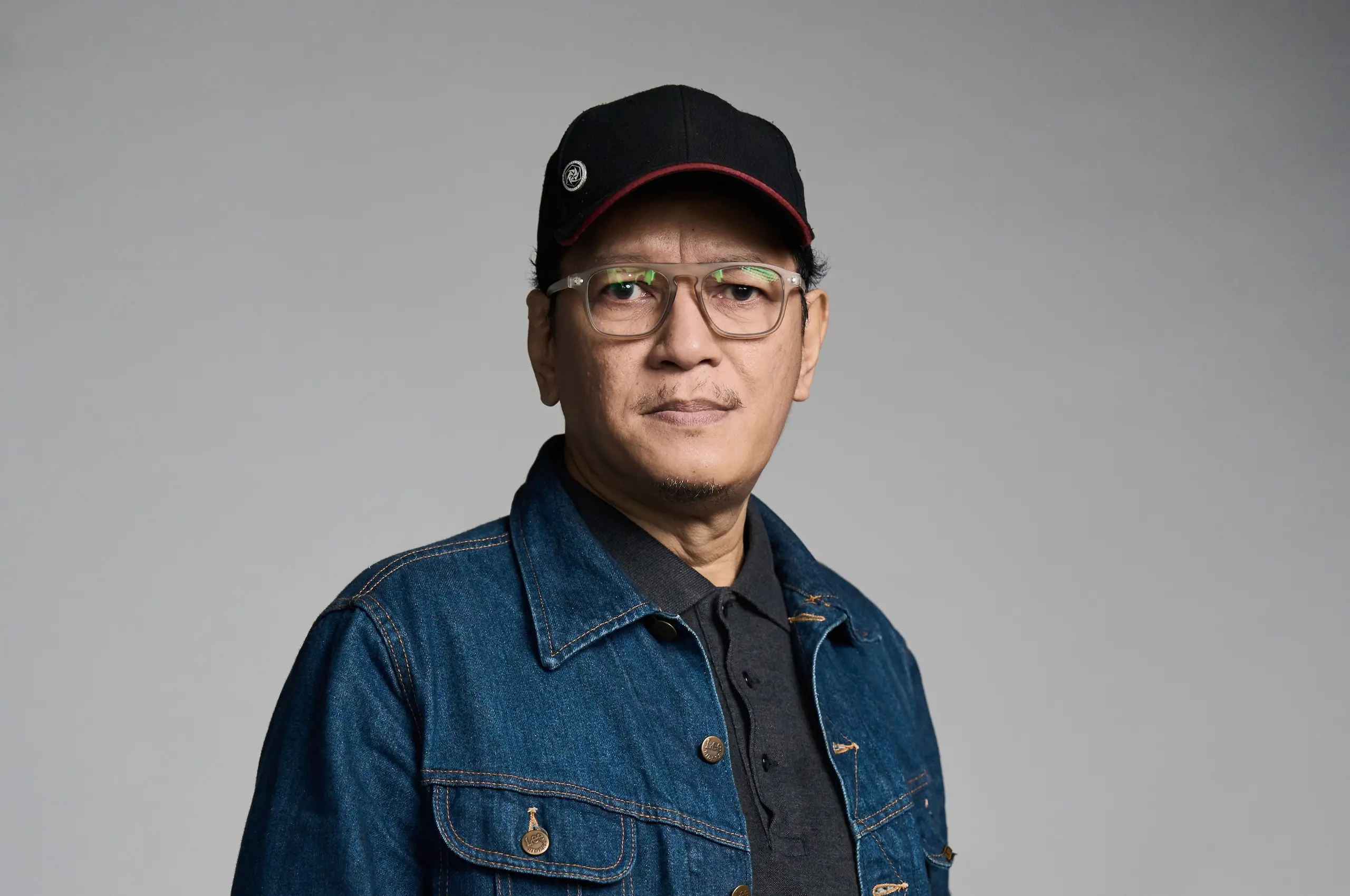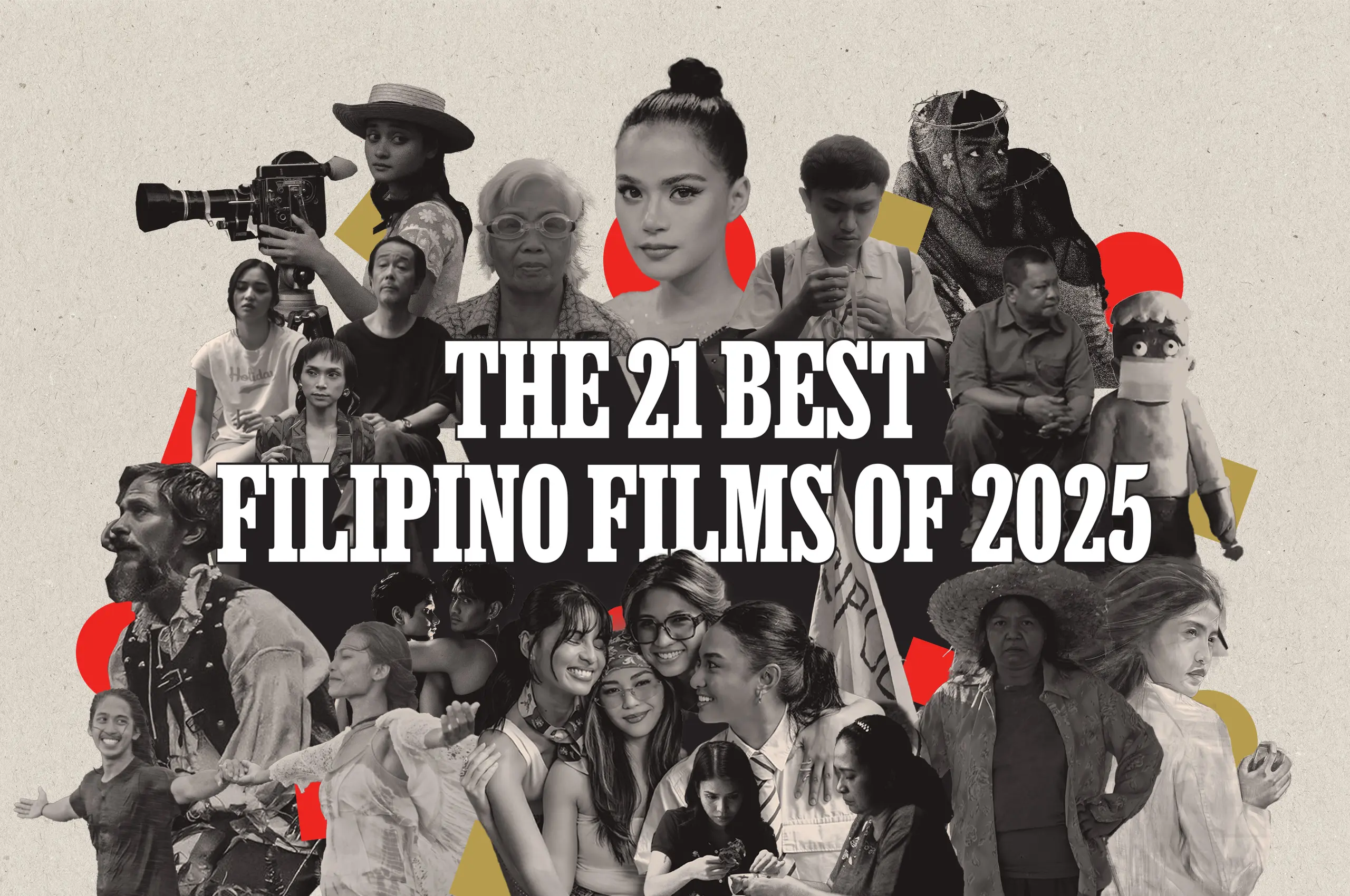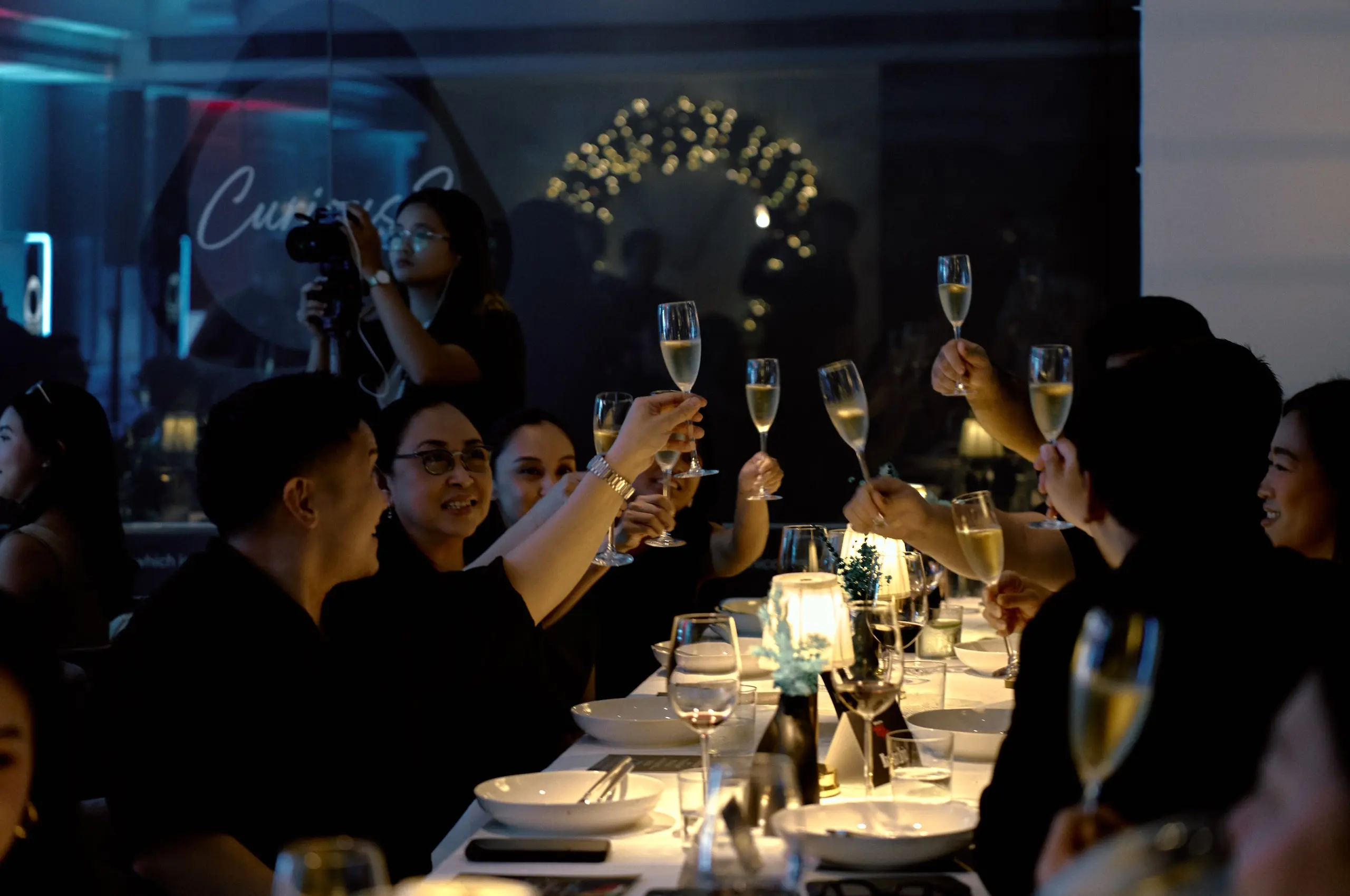September 21 marked the 53rd anniversary of Ferdinand Marcos Sr.’s declaration of Martial Law in 1972, one of the darkest chapters in Philippine history. The date has since become a national day of protest, with rallies organized by grassroots movements, artists, and civil society groups calling for justice and accountability. In 2025, in the wake of the Department of Public Works and Highways scandal, where several flood control projects exposed yet another scheme that stole billions of taxpayers’ money, the call for systemic change is louder than ever.
Three rallies were staged: one at Luneta Park, the historic grounds where generations of Filipinos have gathered to demand freedom, and another at Mendiola, the symbolic gateway to Malacañang Palace and one located at the EDSA Shrine in Ortigas. The crowd was intergenerational with a notable set of characters: There were hip-hop heads in balaclavas, cosplay fans in Naruto Hokage robes, and even a cyclist in full Spider-Punk attire taken from Spider-Man: Across the Spiderverse. Despite the range of people, their unified message was clear: Corruption has reached absurd levels, with confidential funds and pork-barrel scandals making the political class a target of satire and anger alike.
Everywhere, mass organizations waved their flags: Red banners of Anakbayan, purple standards of Gabriela, rainbow colors of Bahaghari, and scattered among them, the skull-and-bones flag from the Japanese manga series One Piece, which has become a symbol of rebellion seen at recent protests in Jakarta and Kathmandu. The convergence of symbols and communities became a demonstration of how dissent crosses subcultures and generations.
Marching Toward Mendiola
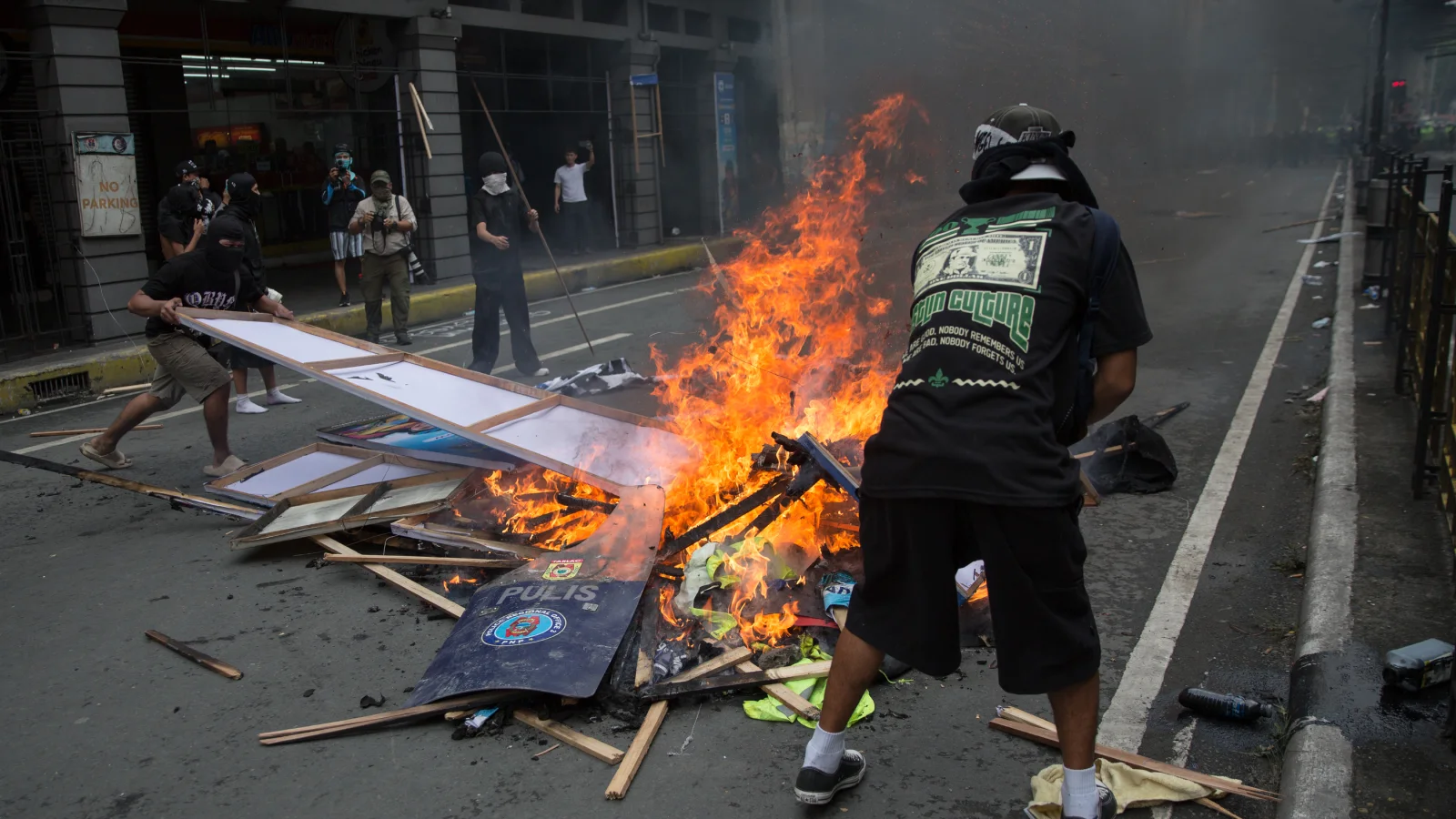
By early afternoon, I joined the stream of protesters making their way from Luneta down Kalaw Avenue. Along the way, bystanders mocked and parodied the chants, but the march pushed on as the crowd grew louder. The demands were diverse: higher wages for women workers, universal healthcare, and, most urgently, accountability for kleptocrats siphoning public funds through bogus infrastructure contracts.
The streets bore witness, too. Graffiti marked the names of martyrs Erika Salang, Kriselda Lagmay, Kim Garcia, Parts Bagani, and Robert Amparo on the walls near LRT Central Station. By the time the march crossed MacArthur Bridge toward Carriedo, the moment turned cinematic. The chorus of protesters reverberated at the underpass while Freddie Aguilar’s “Bayan Ko” blared from Metropole, a department store along Recto Avenue. No state-sponsored commemoration could manufacture such a scene; it belonged to the people in the streets.
“We’re speaking of billions and billions of pesos. Maybe umabot na rin ng trillions for so many years. Is it justified? ‘Yung galit? Definitely.”
Near Isetann Department Store, graffiti crews hurriedly painted over the blank pillars of the LRT with calls to free political prisoners and abolish the National Task Force to End Local Communist Armed Conflict (NTF-ELCAC). By 3:15 p.m., the crowd reached Mendiola. Organizers tried to settle the program, but within minutes tensions escalated. After mass organization leaders called for an organized dispersal, protesters hurled bottles and rocks at the barricades blocking the route to Malacañang Palace. Police responded with tear gas and water cannons. What had begun as a peaceful march turned into a confrontation that evoked Manila’s long history of street battles.
Anger Reaching Boiling POint
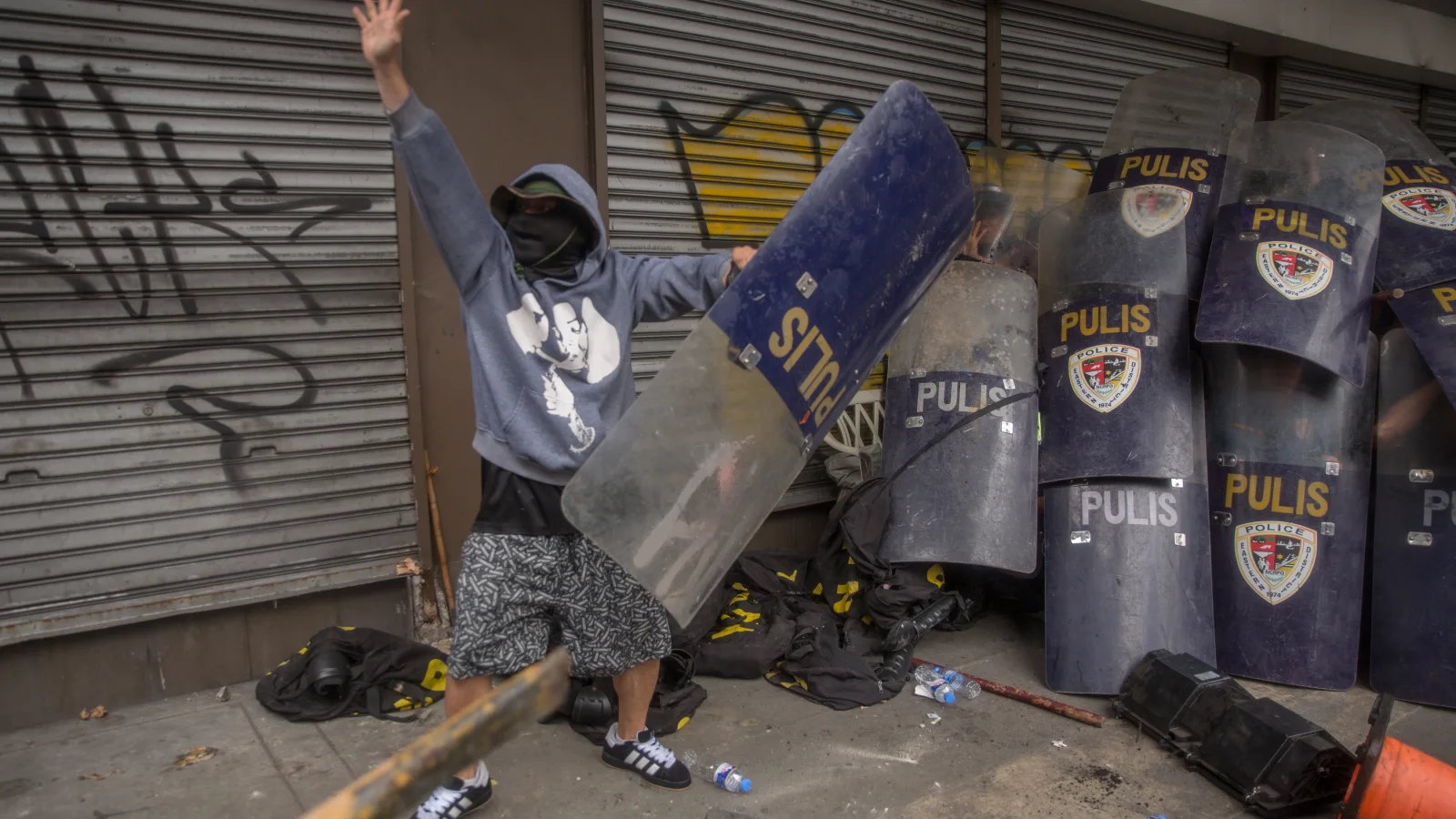
Photojournalist Raffy Lerma, long known for documenting former President Rodrigo Duterte’s drug war, was at the frontlines. “It’s something different and it might change the way people will protest in the future,” Lerma told Rolling Stone Philippines. “Agree ako, may grievance na dapat nilabas. We’re speaking of billions and billions of pesos. Maybe umabot na rin ng trillions for so many years. Is it justified? ‘Yung galit? Definitely. We should all agree on that. Dapat tayong magalit in whatever shape or form.”
Lerma’s work has always treaded the line between bearing witness to and absorbing the trauma of violence. At Mendiola, he was battered by the chaos, sustaining minor injuries all over his body. Yet his account remained steady, defined by the belief that his role was neither to endorse nor condemn, but to document.
“Honestly hindi siya trabaho for me… No one commissioned me to do the work,” he said. “I wanted to document it. I know it’s part of history and whatever transpires, I’m there to document. Did I go home? Of course, I did. I needed to go home. Basang-basa ako. May cut ako sa eye, and may injury ako sa leg. So… trabaho ba ‘yon?”
For Lerma, frustration was the real backdrop. “There’s so much frustration din e, and rightly so,” he said. “If adamant sila on people trying to go after these rioters, I think it’s also right na habulin ‘yung mas malalaking criminal na tumangay ng bilyun-bilyong peso worth [through corruption]. And that’s more of an injustice for me.”
Bearing Witness to Violence
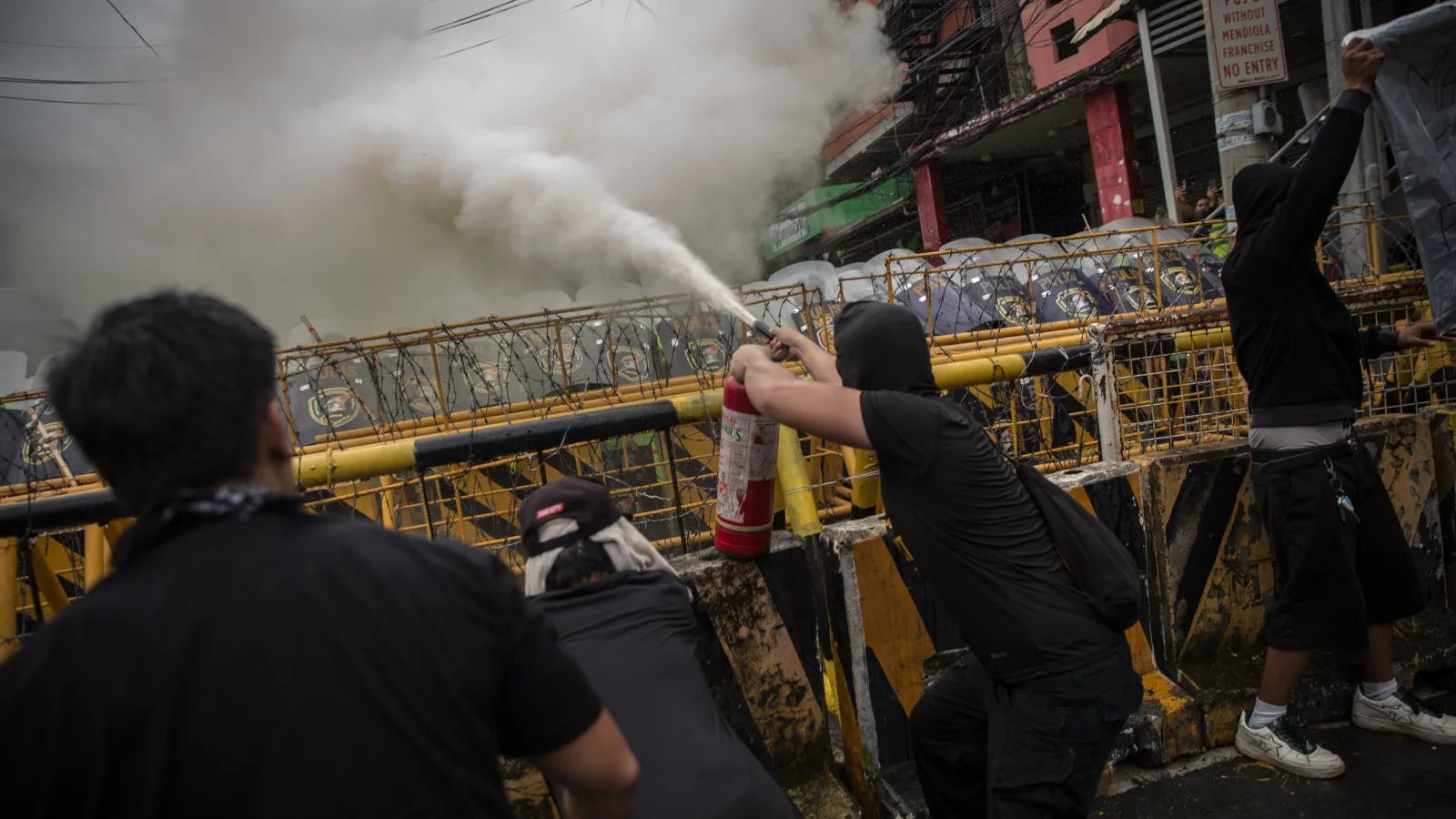
Ezra Acayan is an award-winning photojournalist who has covered everything from typhoons to the war on drugs. He was on the ground when a motorcycle was burned underneath a container truck on Ayala Bridge, and when rioters went head-to-head with a SWAT team hours after the Mendiola protest finished.
The march from Luneta to Mendiola on the anniversary of Martial Law is an annual reminder that the wounds of dictatorship, cronyism, and corruption are far from healed. For the protesters, dressing as anime heroes or waving pirate flags was not a spectacle, but an act of reclaiming space, signaling that the fight for justice belongs to every generation. For Acayan, photojournalism is about documenting the direction a story takes, and September 21 reaffirmed that duty, even at personal cost.
“Kasi sa akin, mas nag-focus na ako talaga sa gulo kasi doon ‘yung direction ng story,” Acayan said. “And of course, nakuhanan ko naman din ‘yung peaceful protest noong umaga. Sinasabi [ng mga tao] bakit hindi ako mag-focus sa peaceful? Gusto kong sabihin, ‘E ‘di follow niyo ‘yung mga ibang photographer. [Napakaraming] photographers na pumunta sa mga peaceful [protest]. Pero sa oras na ‘yun, sa Recto, ako lang mag-isang photographer e.”
On social media, people criticized Acayan for his choice to document the violence, with some accusing him of glamorizing confrontation. Acayan pushed back, saying he was just a witness. “Kagabi, naging witness ako doon sa violent way ng pag-protest ng mga bata. Pero for many years [in my career], naging witness din ako ng violence ng government natin.”
“Kagabi, naging witness ako doon sa violent way ng pag-protest ng mga bata. Pero for many years of my career, naging witness din ako ng violence ng government natin.”
For Acayan, context matters, stressing that he has long documented the structural violence inflicted by the state. “I was witness to the violence of the police and the state,” he said. “Tapos syempre, taun-taon, hindi nawawala ‘yung coverage ng mga typhoon. Mga nasasalanta, mga nawawalan ng bahay, mga namamatay — partly because the government failed them. The government failed to protect them.”
That night, Acayan also captured protesters chasing down an unidentified gunman near Hotel Sogo in Recto Avenue after warning shots from the police were fired. For him, the evening underscored the imbalance between the state’s violence and the people’s resistance.
“Again, I’m just a witness. Pero if you ask me, parang may mas matinding violence kaysa doon sa mga nangyari kahapon,” he said. “Ano lang naman ‘yun, bato, bote, at apoy. It’s nothing compared to ‘yung libu-libong pinatay ng Oplan Tokhang. ‘Yung mga libu-libong namamatay sa bagyo. Or the millions more na nawawalan mga tirahan, hanapbuhay.”
What Lerma and Acayan saw on September 21 was part of a continuum of the daily struggle of the Filipino people. The date was when folks joined the long list of Philippine street battles where grief, anger, and hope collide. The songs of Aguilar, the chants for wages and healthcare, the graffiti of martyrs’ names, and the photographs that emerged from Mendiola will remain as records of a day when ordinary people filled the streets and demanded more.
“‘Yung violence na na-inflict sa kanila ng government, araw-araw ‘yan,” he said. “Araw-araw silang nagugutom, araw-araw naging naghihirap maghanapbuhay. I’m witness to these things. Pero it’s up to the people to decide ano ba talaga ‘yong mas violent.”
